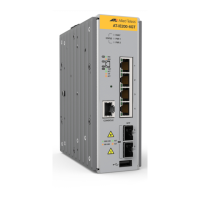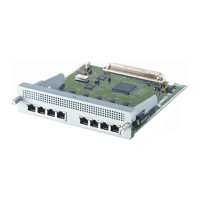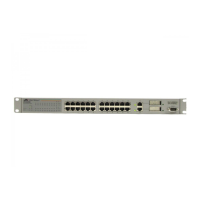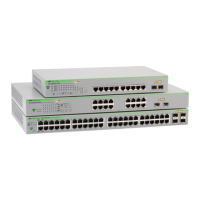C613-50631-01 Rev A Command Reference for IE340 Series 1010
AlliedWare Plus™ Operating System - Version 5.5.3-0.x
ROUTING COMMANDS
SHOW
IP ROUTE
show ip route
Overview Use this command to display routing entries in the FIB (Forwarding Information
Base). The FIB contains the best routes to a destination, and your device uses these
routes when forwarding traffic. You can display a subset of the entries in the FIB
based on protocol.
To modify the lines displayed, use the | (output modifier token); to save the output
to a file, use the > output redirection token.
Syntax
show ip route [bgp|connected|ospf|rip|static|
<ip-addr>|<ip-addr/prefix-length>]
Mode User Exec and Privileged Exec
Examples To display the static routes in the FIB, use the command:
awplus# show ip route static
To display the OSPF routes in the FIB, use the command:
awplus# show ip route ospf
Output Each entry in the output from this command has a code preceding it, indicating the
source of the routing entry. For example, O indicates OSPF as the origin of the
route. The first few lines of the output list the possible codes that may be seen with
the route entries.
Typically, route entries are composed of the following elements:
•code
• a second label indicating the sub-type of the route
• network or host IP address
• administrative distance and metric
Parameter Description
bgp Displays only the routes learned from BGP.
connected Displays only the routes learned from connected
interfaces.
ospf Displays only the routes learned from OSPF.
rip Displays only the routes learned from RIP.
static Displays only the static routes you have configured.
<ip-addr> Displays the routes for the specified address. Enter
an IPv4 address.
<ip-addr/prefix-length> Displays the routes for the specified network. Enter
an IPv4 address and prefix length.

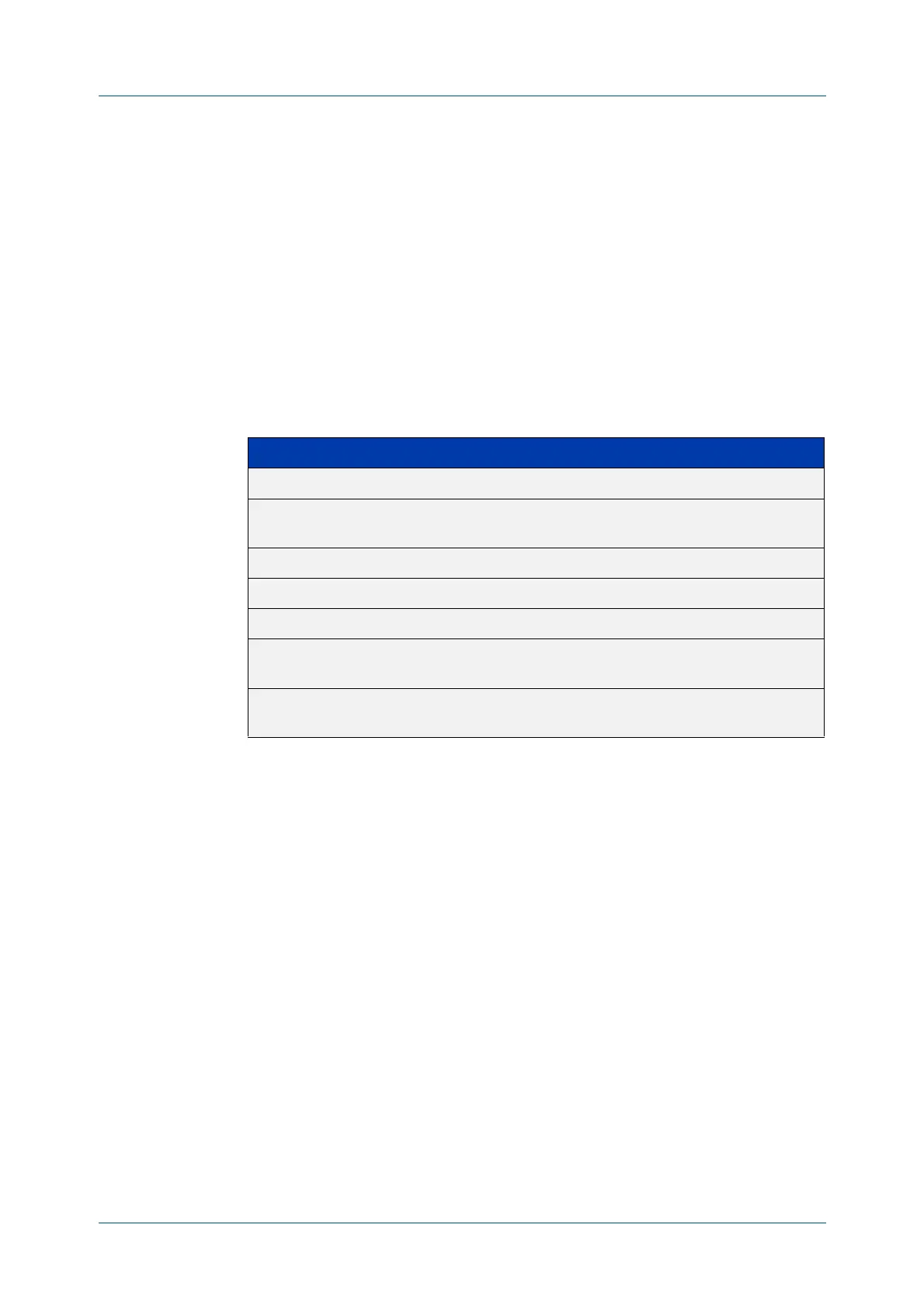